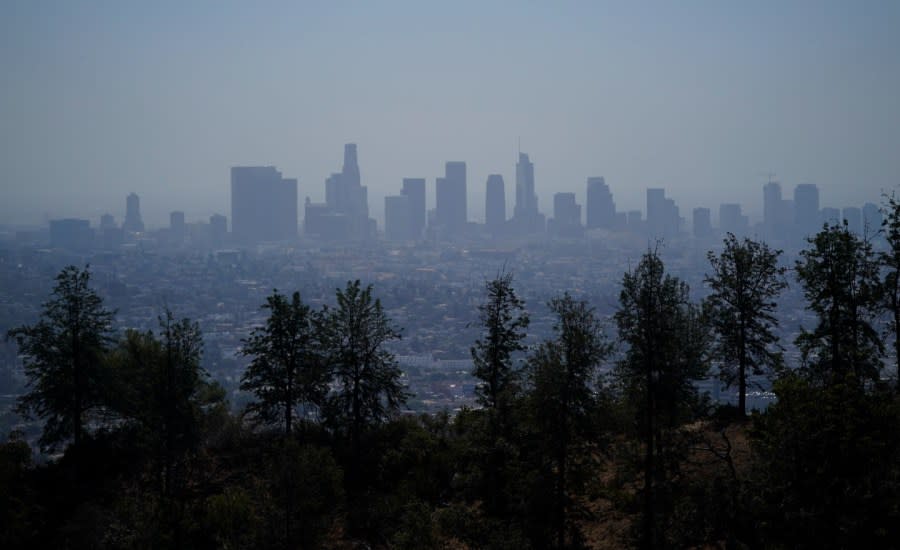Warming may be driving surge in airborne chemical pollution in Los Angeles: Study

Warmer temperatures may be catalyzing a climb in vaporized chemical contaminants across Los Angeles, a new study has found.
Even though the California city, like so many other U.S. urban hotspots, boasts meaningful declines in transportation-related emissions, residents are still contending with unhealthy air pollution levels, the study authors noted.
The contaminants in question are known as “volatile organic compounds” (VOCs), or carbon-containing chemicals that can vaporize into the air.
With VOC levels in Los Angeles still high, the researchers sought to uncover their sources — ultimately publishing their findings in Science on Wednesday.
Synthetic variants of these compounds are known for their presence in solvent-based paints, inks and other products. However, certain types of VOCs — called terpenoids — exist in nature and are absorbed, stored and released by “biogenic” hosts like trees, plants and soils.
It’s these biogenic sources of VOCs that dominate the formation of summertime air pollution in Los Angeles, according to the study.
Specifically, biogenic terpenoid emissions are responsible for about 60 percent of all potential VOC reactivity, ozone generation and secondary organic aerosol formation during Los Angeles summers, the authors found.
That contribution, they added, strongly rises alongside surges in temperature.
The study’s lead researchers — from the University of California, Berkeley, and Germany’s Forschungszentrum Jülich institute — said they took a new approach in quantifying both the magnitude and composition of VOC emissions in Los Angeles.
Their method involved taking airborne flux measurements — precision readings conducted aboard aircraft — above Los Angeles and over a range of temperatures.
The scientists were then able to identify more than 400 VOC species from both biogenic and anthropogenic sources and deduce that temperature-dependent emissions were fueling ozone and secondary organic aerosol formation.
In addition, they observed that 60 percent of both contaminants formed via reactions with biogenic emissions — coming from blooming plants or plants enduring heat or drought stress.
Any future regulatory action, they stressed, must therefore consider that although air pollution mitigation activities are critical, these efforts can only help reduce about 40 percent of urban VOC emissions: those caused by humans.
Nonetheless, the researchers also found that anthropogenic VOC emissions surge alongside temperature increases — and that this association is not yet included in current emission databases.
“The findings highlight that climate change could increase urban air pollution events unless anthropogenic emissions are significantly reduced,” the authors stated.
Thomas Karl, a professor of atmospheric physics at the University of Innsbruck in Austria, credited the researchers in an accompanying perspective for “providing a much clearer picture of the anthropogenic and biogenic VOC fluxes.”
“The findings have important implications for air quality regulations aimed at managing ozone and secondary aerosol formation in the South Coast Air Basin region and beyond,” Karl added.
Copyright 2024 Nexstar Media, Inc. All rights reserved. This material may not be published, broadcast, rewritten, or redistributed.
For the latest news, weather, sports, and streaming video, head to The Hill.


